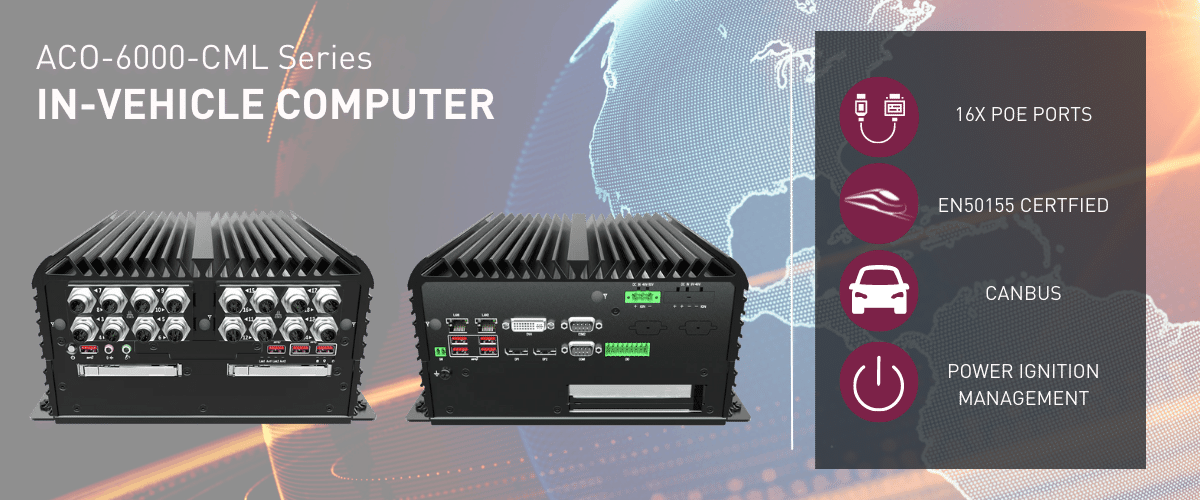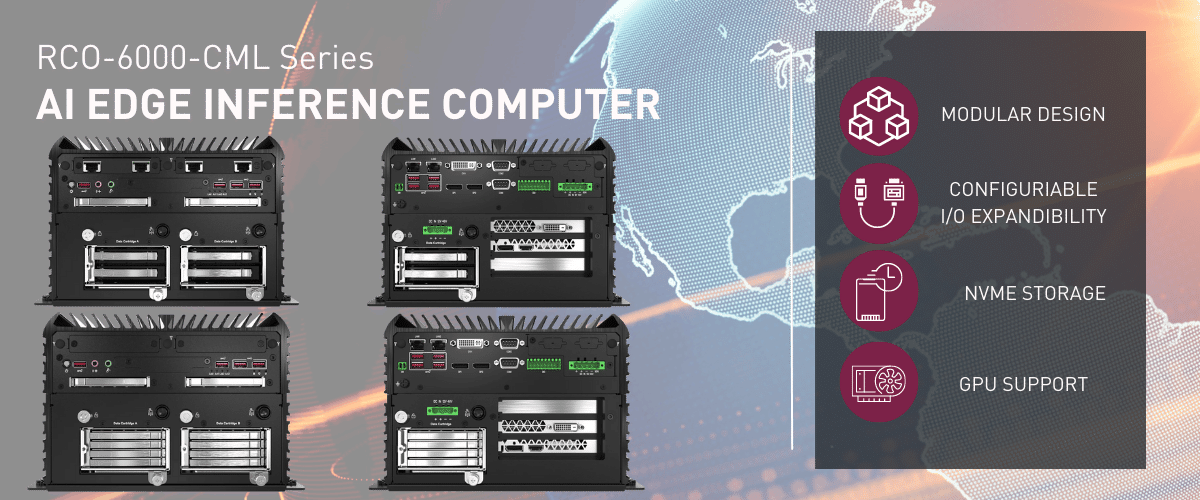What are Mobile Surveillance Systems?

What are Mobile Surveillance Systems?
Mobile Surveillance Systems are ruggedized remote security equipment that provide safety and data insight for various applications. From on-board transit surveillance to quick deployment surveillance trailers, mobile surveillance systems have a multitude of deployment applications that accomplish the same objectives in different locations. These objectives can consist of deterring trespassers, monitoring activity, collecting evidence, alerting authorities quickly to deescalate situations, and more.
Different Types of Mobile Surveillance Systems
There are two distinct types of mobile surveillance systems: mobile towers/trailers and in-vehicle surveillance. Both have similar purposes but are installed and deployed in different locations.
Mobile Surveillance Towers
These towers are constructed with a solar powered bottom base where the industrial computer and other essential components are stored, a tall pole typically 20 feet tall, and a couple of PoE IP Cameras at the top. What makes these towers mobile is that it can be deconstructed and assembled in a matter of minutes. These towers are occasionally called trailers because they are towed to their designations. Because of their ease of installation and flexibility of transportation, surveillance towers are versatile in their deployments whether it be surveying in isolated locations or monitoring activity in parking lots.
Transportation Surveillance
Unlike mobile surveillance towers, surveillance cameras are installed onto vehicles such as trains and buses. These are typically permanent installations that will remain in the vehicle until the end of its lifecycle. Due to the shock and vibration generated by the moving vehicle, there are standardizations that electronic equipment must comply with. In railway applications, the surveillance system must be EN50155 certified in order to be installed onto rolling stock. This is to ensure that the equipment (the cameras and IoT gateway) are reliable and competent to operate in the harsh conditions that moving vehicles encounter.
Mobile Surveillance System Features and Benefits
Traditional CCTV and security guards do not have the efficiency and capabilities that next-gen mobile surveillance systems do. Hiring security guards is costly and requires multiple guards to monitor larger facilities properly. CCTVs are primarily used to monitor and provide evidence after an incident has occurred, not to alert or prevent the incident from happening. Mobile surveillance systems, however, have the flexibility to provide better security and safety than the traditional methods by using the latest technologies.
1. Remote and Mobile deployments
Mobile Surveillance Systems are commonly installed onto transit vehicles for safety and monitoring purposes. With the addition of an In-Vehicle Computer, this technology enables fleet management, vehicle telematics, V2V communications, and more. These technologies provide gateways to improve the future of transit and transit safety for a smart city.

Because some mobile surveillance systems are deployed for temporary uses, like construction sites or parking lots, surveillance trailers can be rapidly deployed and begin operating. These surveillance trailers or towers are self-sustaining due to its solar power capability, allowing it to operate reliably in remote locations. Some applications that mobile surveillance systems are commonly deployed include:
- Rapid Transit Rail (Metro, Subways, U-Bahn)
- Light Rail (Commuter, Interurban, S-Bahn)
- Transit Buses
- Construction Sites
- Container Ports
- Storage Yards
- Airports
- Ports/Harbors
- Parking Lots
- Public events
2. AI Technologies
Traditional NVR systems only capture and save footage, with AI technology, surveillance systems can recognize objects, alert authorities, and save data insights. AI has become more advanced throughout the years and can recognize objects based on their shape. This is useful because if a camera detects a human figure walking on private property during off hours, it will alert authorities and the suspect can be questioned before any potential damage can be done. Data insight is crucial, researchers can gather data collected by the surveillance camera to find trends and adjust their operations to maximize efficiency. An example is passenger counting, where AI detects and saves the number of passengers entering and exiting a vehicle. Fleet managers can use this valuable data to develop an efficient schedule so fleet managers can adjust the number of vehicles to deploy and what time they should arrive at stops. This process is cost effective as fleet managers will know exactly how many vehicles to deploy, and beneficial to passengers knowing that the transit is reliable even during peak hours.

3. Ruggedization
Like industrial computers, mobile surveillance systems must be ruggedized to withstand harsh environmental conditions and deliver reliable performance. Like in a case study where we provided an IoT gateway to connect multiple UHD cameras in remote locations to assist in detecting and preventing wildfires. The ruggedization of the equipment (camera, industrial computer, etc.) is extremely important in providing reliability while in remote areas where wireless service is not always available and maintenance crews do not come by frequently.

With vehicular deployments, each piece of equipment must comply with various standardizations such as EN50155 for rolling stock deployments; validating that it has passed a rigid performance test and is competent while under operation. Ruggedization factors that are considered are:
- Wide operating temperature range
- Shock and vibration resistance
- Debris, dust, and contaminant resistance
- Wide power input range
- Electrical surge, insulation, and polarity protection
Now that both cameras and computer are ruggedized, how will the cameras reliably relay data to the computer? M12 connectors have a waterproof locking mechanism that secures connectivity without any chances of disconnecting. Because it is waterproof, they are used for mobile surveillance towers that need reliable stable connections even during harsh weather conditions. Normal connectors like RJ45 and USB A are unsuitable for the shock and vibration that vehicular deployments face regularly. M12 connectors ensure a secure signal connection by housing the wires in a terminal that locks them in place.
4. Secure Encrypted Data with TPM 2.0
Intellectual property has become an increasingly susceptible target for hackers. Trusted Platform Module or TPM 2.0 is a hardware-level encryption module that ensures the computer is tamper-free and encrypts data stored. It is necessary for mobile surveillance systems to have TPM 2.0 because the cameras collect evidence if an incident occurs and can store valuable AI data for business insights. TPM 2.0 has many features like:
- Scans BIOS for unauthorized changes to the system
- Locks the system when a hard drive is relocated
- Enables BitLocker Drive encryption for safe boot protocol

5. Data loss prevention with RAID
Video records and data insight are all extremely valuable for mobile surveillance systems. In rare cases where a data storage drive fails, RAID (Redundant Array of Independent Disks) ensures no data is lost with data mirroring or striping with parity. RAID utilizes multiple hard drives to, in most cases, create parity bits throughout each drive to sustain the loss of a failed drive or two. Although infrequent, RAID provides the necessary layer of protection against data loss during mission-critical deployments. There are a selection of RAID configurations to choose from to maximize performance and efficiency for specific workloads:
RAID 0 - Striping: Boosts storage processing performance by distributing data across multiple drives. This configuration should not be used in mobile surveillance systems as there is no data loss prevention.
RAID 1 - Mirroring: Requires 2 hard drives where data is duplicated between both drives.
RAID 5 - Striping with Parity: Requires 3+ hard drives and stripes parity between all drives to prevent data loss if one of the three were to fail. However, parity utilizes the capacity of one hard drive.
RAID 6 - Striping with Double Parity: Requires 4 or more hard drives and follows the same protocol as RAID 5, but instead can sustain a loss of two drives.
RAID 10 - Combining RAID 0 & 1: Mirrors a set of hard drives while enhancing storage processing performance. This configuration will take up half of the total storage capacity, however, data will be restored even if half the drives fail.
Why are Industrial Computers a key component for mobile surveillance?
Although many surveillance systems manage data using the Cloud, there is demand for higher performance applications at the edge that the Cloud cannot efficiently operate in. Industrial computers are a key component to a mobile surveillance system because they are both the power source and ‘brain’ of the system. Without the industrial computer, the whole mobile surveillance system is inoperable as they all greatly rely on its reliability and wide set of features. Having all cameras and other devices connected to a single computer is much easier to manage and maintain compared to traditional surveillance cameras that require multiple cables to be routed to different inputs. Industrial computers are equipped with plentiful PoE ports that provide power and connectivity to surveillance cameras and other devices/sensors. In order to have intelligent surveillance, an industrial computer is necessary to run data intensive programs like AI to identify objects and collect/store data for analysis.
Furthermore, industrial computers localize the necessary processing power to enable applications like AI Edge Inferencing and V2V communications. It has extensive functionality besides connecting surveillance cameras with additional features such as built-in CANBus, power ignition management, and wireless connectivity. These industrial-grade computers are purpose-built to be deployed with mobile surveillance systems with its fanless, cableless, hardened architecture.
Rugged Industrial Computers for Mobile Surveillance System

In-Vehicle Computer
C&T’s latest 10th Gen Intel In-Vehicle Computer, ACO-6000-CML, is purpose-built for vehicular deployments. It is EN50155 certified and validated to operate reliably in rolling stock/railway and approved with E-mark for automotive applications. This In-Vehicle computer can connect up to 16 IoT devices simultaneously for versatile IoT configurations.
- 16x PoE ports
- CANBus
- Power Ignition Management
- 5G Ready
- Extended wide power supply input 9-48VDC and 48-110VDC
- EN50155, EN50121-3-2, and Emark Certified
Learn more about C&T's In-Vehicle Computer >>

AI Edge Inference Computer
Our AI Edge Inference Computer, RCO-6000-CML, is designed for smart surveillance with its capabilities to enable data intensive applications like AI inferencing. With the addition of our performance accelerating EDGEBoost Nodes, the computer can deliver GPU support and NVME storage for rapid processing power.
- 10th Gen Intel Core & Intel Xeon W Processor
- 8x Univeral I/O Modules
- Dual hot-swappable SSDs
- GPU support with EDGEBoost Node
- Hot-swappable NVME U.2 canister bricks with EDGEBoost Node
- CANBus
- Power Ignition Management
Find out more about our AI Edge Inference Computer >>
Why C&T?
C&T has been providing specialized edge computing technologies globally for various interntaional customers. We design and manufacture highly reliable computing solutions for enterprises with complex specifications. Our state-of-the-art facility is all in-house assets for scalability and rapid time-to-market speeds. We also have strategic partners in Taiwan, Malaysia, Germany, and U.S. to provide localized service to our customers all over the world. Feel free to contact us for more information about our solutions.


